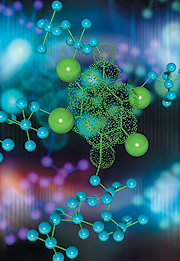Aug 18 2010
From new medical applications, to the latest gadgets and consumer products, innovative nanotechnology is pushing the boundaries of what we believed possible.
But for this technology to develop further, faster and better we need a clear understanding and a logical classification of nanomaterials.
 ISO/TR 11360 introduces a system called the “nano-tree”, which places nanotechnology concepts into a logical context by indicating relationships among them as a branching out tree.
ISO/TR 11360 introduces a system called the “nano-tree”, which places nanotechnology concepts into a logical context by indicating relationships among them as a branching out tree.
ISO has therefore published a new technical report, ISO/TR 11360:2010, Nanotechnologies – Methodology for the classification and categorization of nanomaterials, offering a comprehensive, globally harmonized methodology for classifying nanomaterials.
Nanotechnology deals with structures between 1 to 100 nanometers. Applications are wide, and range from computer memory storage to sunscreens. Nanomaterials currently in existence exhibit various physical, chemical, mechanical, optical, magnetic and biological properties, as well as different internal/external structures.
Because scientists and researches in this new field have very diverse backgrounds, and are working on different applications, there are now many divergent understandings and assumptions associated with emerging scientific concepts in this area. This is causing poor communication, lack of interoperability among systems and duplication of efforts.
ISO/TR 11360 introduces a system called the “nano-tree”, which places nanotechnology concepts into a logical context by indicating relationships among them as a branching out tree. The most basic and common elements are defined as the main trunk of the tree, and nanomaterials are then differentiated in terms of structure, chemical nature and other properties.
“The document provides users with a structured view of nanotechnology, and facilitates a common understanding of its concepts,” says Peter Hatto, Chair of the committee that developed the standard (ISO/TC 229). “It offers a systematic approach and a commonsensical hierarchy”.
Dr. Hatto adds, “The benefits for this emerging field are enormous. Most importantly, ISO/TR 11360 will promote clear and useful communication amongst industry consumers, governments and regulatory bodies”.
The document will be useful to a wide range of scientific and engineering disciplines engaged in research, industry and government.
Source: http://www.iso.org/